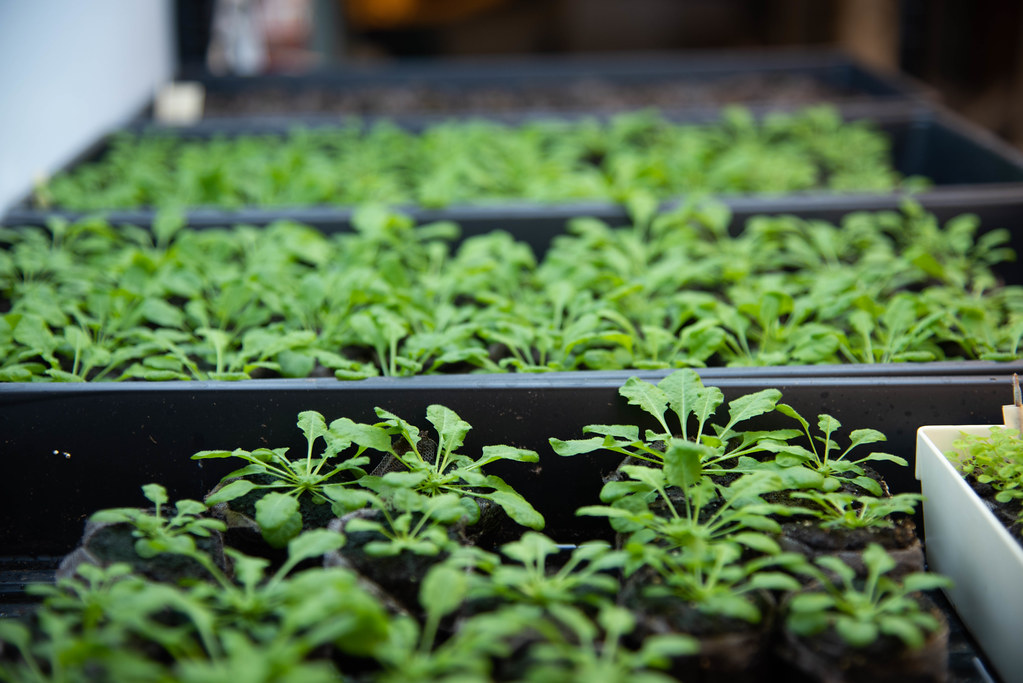News
New observation from Stacey lab could help advance plant engineering

By Lauren Hines | Bond LSC
Think about how a home alarm system alerts a person to a potential burglary with sensors detecting whether an intruder picked a lock, came through a window or came through a garage.
Plants are much like this, surviving with the help of their thousands of sensors that can send danger signals to the whole plant so it can react effectively.
“Plants have to have a whole variety of different mechanisms to respond to their environment because they’re stuck in one spot,” said Gary Stacey, principal investigator at Bond Life Sciences Center. “The way they do that is they have all these membrane-associated receptors, and they receive signals from the outside … so they can induce a defense response.”
Stacey’s lab recently made an observation that could lead to interesting future advancements in plant breeding and engineering. Its work was published May 12 in the journal Nature Communications.
The lab found when a lipid — a fatty molecule — is attached to a receptor, a cysteine amino acid within a protein is modified. This process, in turn, makes the receptor silent. The addition of the lipid is called acylation. The lab found that they could also reverse this process and reactivate the receptor.
In other words, this process can turn receptors on and off, which is what tells the plant that there’s danger.
In addition, the lab can use the acylation process to identify the binding protein and, therefore, identify the receptor that is binding to the protein.
“There’s a lot of receptors for which we don’t know the ligand,” said Stacey. “In other words, if you line up all the receptors, there are only a few of which we know what they’re binding to.”
Identifying these receptors’ functions and what these receptors bind to is a high priority in plant research and agriculture communities.
“If we knew all the receptors, say, that responded to drought or if we knew all the receptors that responded to high light or pathogens or whatever there might be in the ozone … then that would open up pathways for us to engineer plants that are more resistant to these stresses, which would make crop production more sustainable, especially in lieu of the changing climate that we have, and would really be a big step forward for agriculture,” Stacey said
According to Stacey, researchers have been able to identify the function of “a small fraction” of receptors out of 2,000 in the model plant, Arabidopsis. However, the Stacey lab is currently developing a way to find these receptors’ functions.
Developing this analysis has been technically difficult so far — needing more funding and manpower to do all the experiments — but the lab is currently in the proofing stage to verify what they know. So far, they can correctly identify the binding protein and the receptor it binds to for some receptors, but it’s less clear for other receptors. More experiments are needed to see if the analysis will work.
“There are 2,000 [receptors], and we only know the function of a handful,” Stacey said. “There’s a lot of stuff that remains to be discovered and a lot of potentials to do something useful.”’
More information about the study can be found in, “S-acylation of P2K1 mediates extracellular ATP-induced immune signaling in Arabidopsis.” Stacey’s lab collaborated with Dongqin Chen, Fengsheng Hao and Huiqi Mu of the State Key Laboratory of Agrobiotechnology in China, Nagib Ahsan of the University of Oklahoma and Jay Thelen at Bond Life Sciences Center.